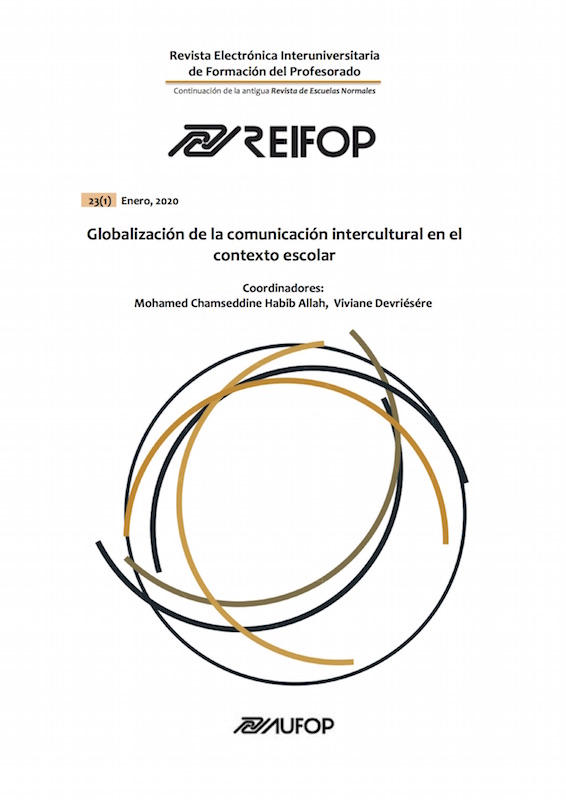The Teaching of Interculturality through Literature: New Challenges
Abstract
The teaching of literature in secondary schools in the Czech Republic (note that this is in the course of Czech literature courses and taught in Czech) contributes in a relevant way to open to young people new worlds. It works starting from the treasury of the world thought, Homer’s Odyssey for example through Shakespearean drama and Goethe’s Faust, to the novels by Balzac or by Zola, to the twentieth century authors who engaged in the humanist cause by unveiling the hidden facets of human existence. The purpose of our reflection on intercultural topics is first of all to analyze the contribution of reading to the level of knowledge, then to propose the possibilities of using literary texts to demonstrate how much the dialogue between cultures is included in the works themselves, and finally, to consider which contemporary literary texts on a world scale could enrich in a relevant way the choice of books recommended to young Czechs. The conclusion will be a synthesis trying to compare the situation of Czech students to that of young Frenchmen, for example. It will also highlight the role of translation not only in teaching literature, but in knowing the Other.
Downloads
-
Abstract672
-
PDF (Español (España))641
References
Literary Works
Alexie, S. (2007). The Absolutely True Diary of a Part-Time Indian. New York: Little, Brown Books for Young Readers.
Capek, K. (1960). La guerre des salamandres. (1993). Paris: Marabout. (1937). War with the Newts, also translated as War with the Salamanders. London: Allen and Unvin.
Capek, K. (1924). R.U.R., Les Cahiers dramatiques, Paris: Éditions Jacques Hébertot, no 21. (2001). R.U.R., (English translation in 1923). Dover Publications.
Comenius, J. A. (2006). Le labyrinthe du monde et le paradis du coeur. Prague : Waldpress. (1997). The Labyrinth of the World and the Paradise of the Heart. London: Paulist Press.
Defoe, D. (2015). Robinson Crusoe. Dover Publications. Robinson Crusoé. (2003). Paris: Livre de poche.
Dubois, G. (2011). Le voyage infernal. Montréal: L’Interligne.
Frank, A. (2017). Le journal d’Anne Frank. Paris: Le livre de poche.
Gagnon, H. (2013). Mille écus d’or. Montréal: Hurtubise.
Golding, W. (1997). Lord of the Flies. London: Faber and Faber. (1956). Sa Majesté des Mouches, Paris: Gallimard.
Homère. (2015). L’Odyssée. Paris: StoryLab Classics.
Hugo, V. (2013). Les Misérables. Paris: Ecole des loisirs.
Huston, N. (2006). Lignes de faille. Paris: Actes Sud. (2007). Fault Lines, The Text Publishing Company, Australia. (2008). London: Atlantic Books. Czech translation (2008). Rodova znameni, Prague: Odeon.
Laferrière, D. (2014). L’odeur du café. Montréal : Soulières éditeur.
Laferrière, D. (2010). La fête des morts. Montréal : Editions de la Bagnole.
Marineau, M. (1992). La route de Chlifa, Montréal, Québec Amérique.
Noël, Michel. (2012). A la recherche du bout du monde. Montréal: Hurtubise.
Orwell, G. (2008). Animal Farm. (1945). London: Penguin Books.
Rouy, M. (2007). La chèvre de bois. Montréal: Hurtubise.
Tournier, M. (2005). Vendredi ou la Vie sauvage. (1971). Paris: Gallimard.
Trudel, S. (2002). Le roi qui venait du bout de monde. (1997). Montréal: Courte échelle.
References
Bertocchini, P., Costanzo, E. (2018). Quel interculturel pour la formation des enseignants ?, Le français dans le monde, No 415, janvier-février 2018, p. 54.
Boiron, M. (2018). L’interculturel en classe au quotidien. Le français dans le monde, No 415, janvier-février 2018, p. 50-51.
Comenius, J. A. (1992). La grande didactique ou l’art universel de tout enseigner à tous. (1657). Paris : Klincksieck.
Dictionnaire de l'altérité et des relations interculturelles. Paris, Armand Colin, 2003.
Dictionnaire Larousse. Online: https://www.larousse.fr/dictionnaires/francais/culture/21072 (21/10/2019). Encyclopédie Larousse. Online: https://www.larousse.fr/encyclopedie/divers/interculturalit%C3%A9/178843 (21/10/2019).
Godard A. (dir.) (2015). La littérature dans l’enseignement du français langue étrangère, Paris, Didier, coll. Langues et didactique.
Groux, D., Barthélémy, F. (2016). Quarante ans d’interculturel en France, hommage à Louis Porcher, L’Harmattan.
Kristeva, J. (1988). Etrangers à nous-mêmes. Paris : Fayard.
Kunesova, K. (2019). La littérature de jeunesse comme outil pluridisciplinaire dans l’enseignement du FLE. Lingua viva, No 29, 2019. Ceske Budejovice : Université de Bohême du Sud, p. 29-37.
Langevin, S. (2018). L’interculturel reste trop souvent un concept pédagogique fourre- tout, Le français dans le monde, No 415, janvier-février 2018, p. 48-49.
Lévi-Strauss, C. (1987). Race et histoire. Paris: Denoël.
Pouliot, S. (1994). L’image de l’autre. Montréal : Editions du CRP.
Vrastilova, O. (2018). Supporting Elementary Students’ Reading Through Authentic Literature for Children. In: International Perspectives On Teaching The Four Skills In Elt. Listening, Speaking, Reading, Writing. Cham, Switzerland: Palgrave Macmillan, p. 141-152.
Los artículos que se publican en esta revista están sujetos a los siguientes términos:
1. El Departamento de Métodos de Investigación y Diagnóstico en Educación de la Universidad de Murcia (España), junto con el Servicio de Publicaciones de la Universitdad de Murcia (Editum) son los editores de la revista REIFOP y conserva los derechos patrimoniales (copyright) de los artículos publicados, permitiendo la reutilización de las mismos bajo la licencia de uso indicada en el punto 2.
2. Las obras se publican en la edición electrónica de la revista bajo una licencia Creative Commons Reconocimiento-NoComercial-SinObraDerivada 3.0 España (texto legal). Se pueden copiar, usar, difundir, transmitir y exponer públicamente, siempre que: i) se cite la autoría y la fuente original de su publicación (revista, editores y URL de la obra); ii) no se usen para fines comerciales; iii) se mencione la existencia y especificaciones de esta licencia de uso.
3. Condiciones de auto-archivo. Se permite y se anima a los autores a difundir electrónicamente las versiones pre-print (versión antes de ser evaluada) y/o post-print (versión evaluada y aceptada para su publicación) de sus obras antes de su publicación, ya que favorece su circulación y difusión más temprana y con ello un posible aumento en su citación y alcance entre la comunidad académica. Color RoMEO: verde.















